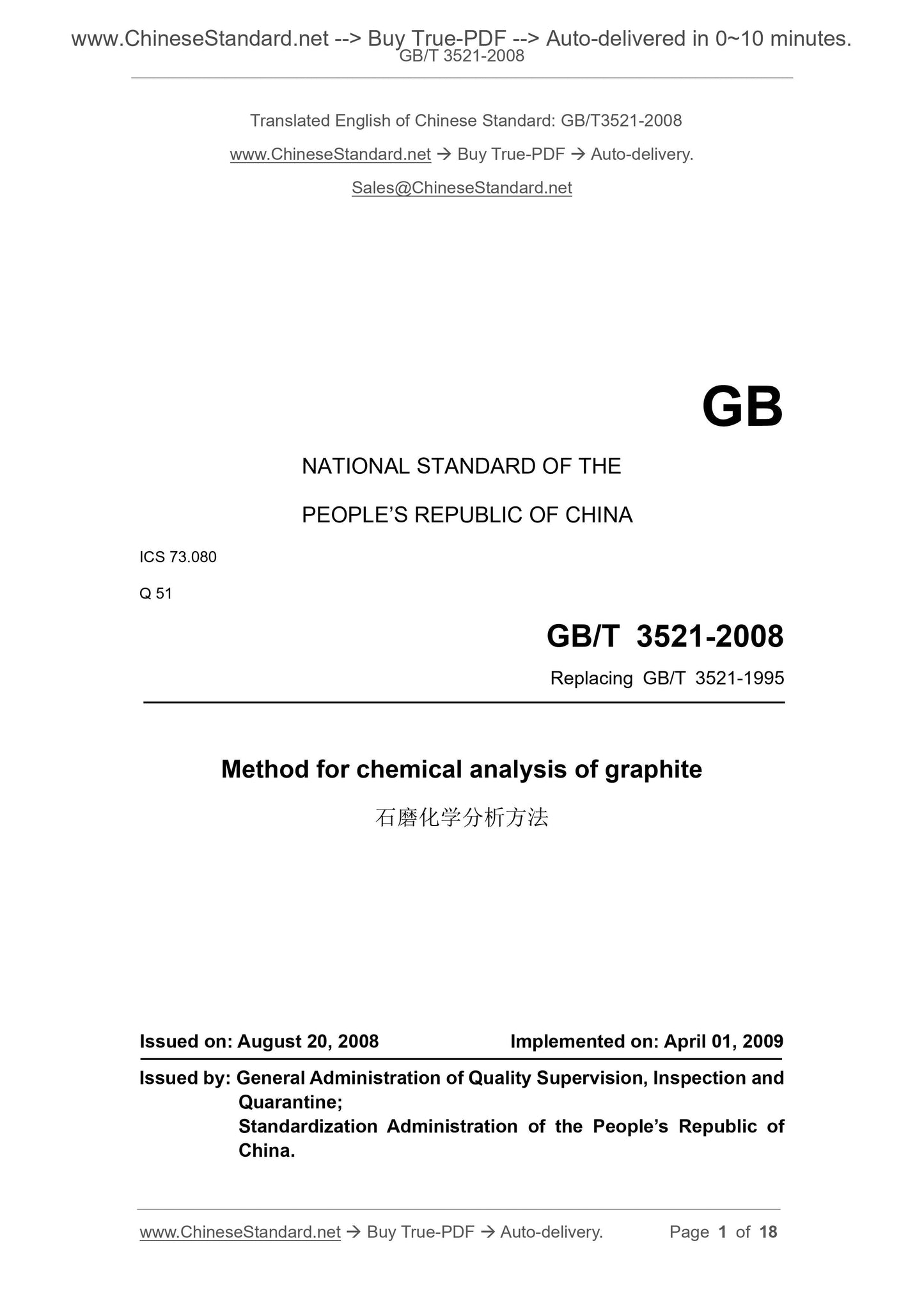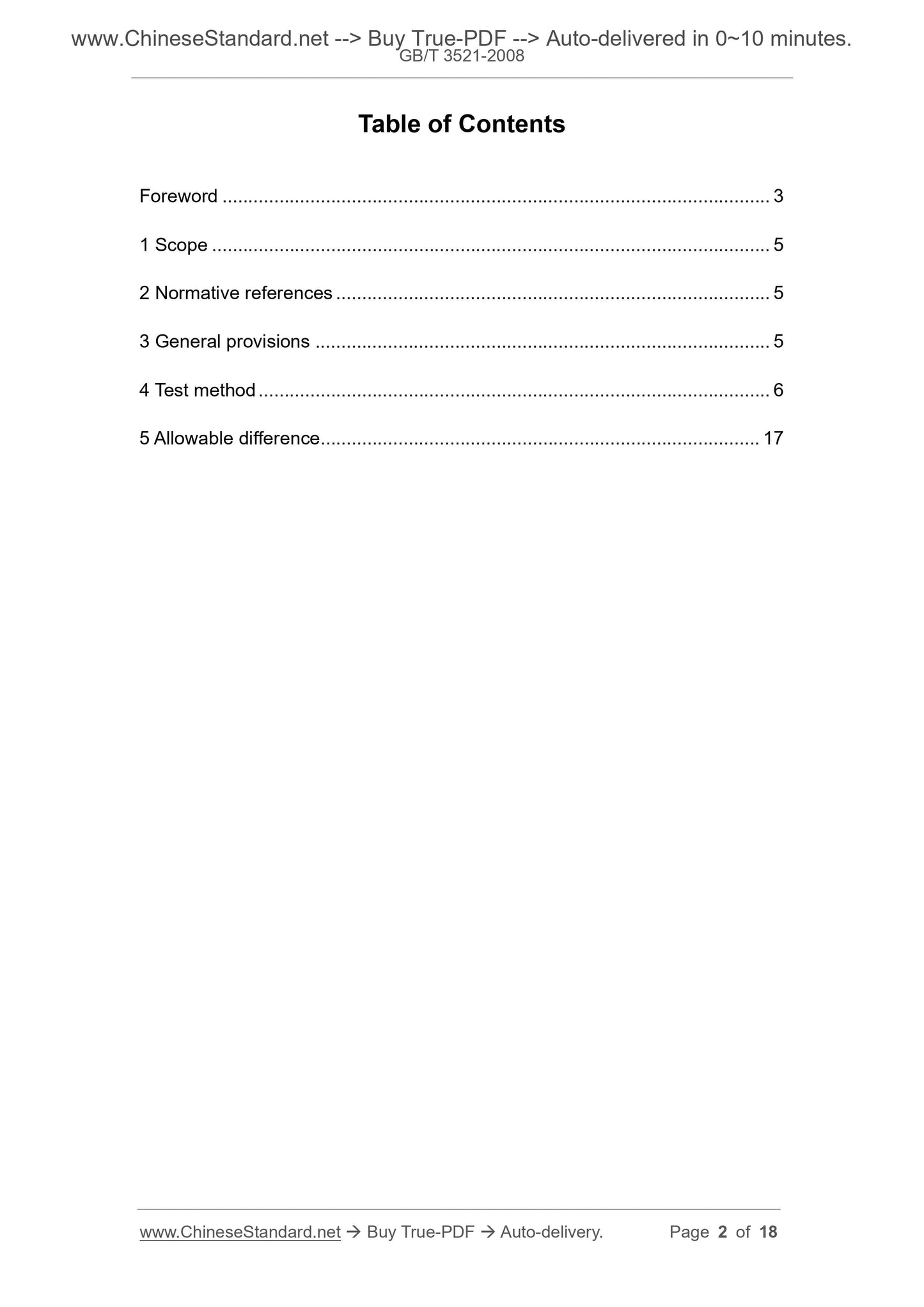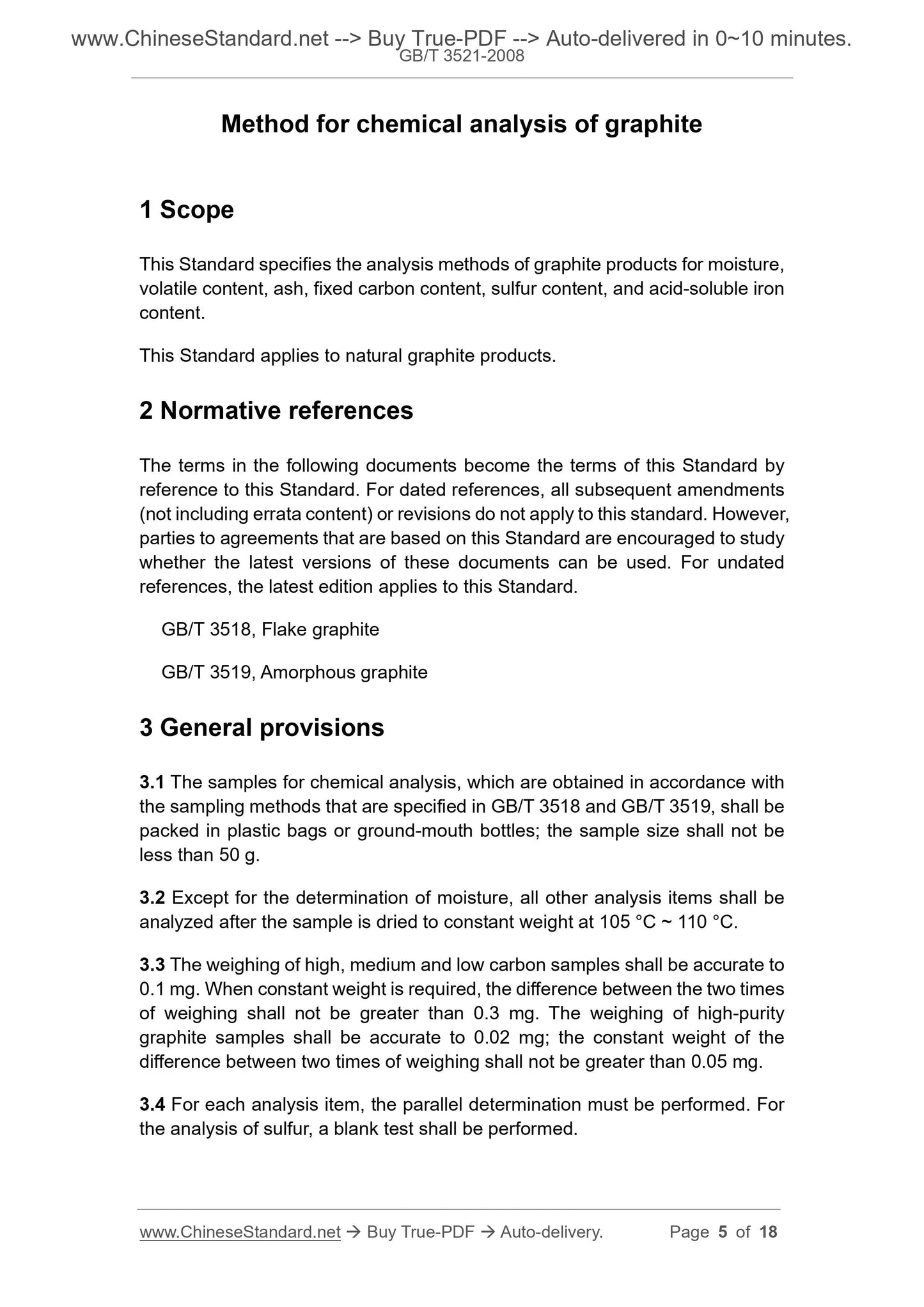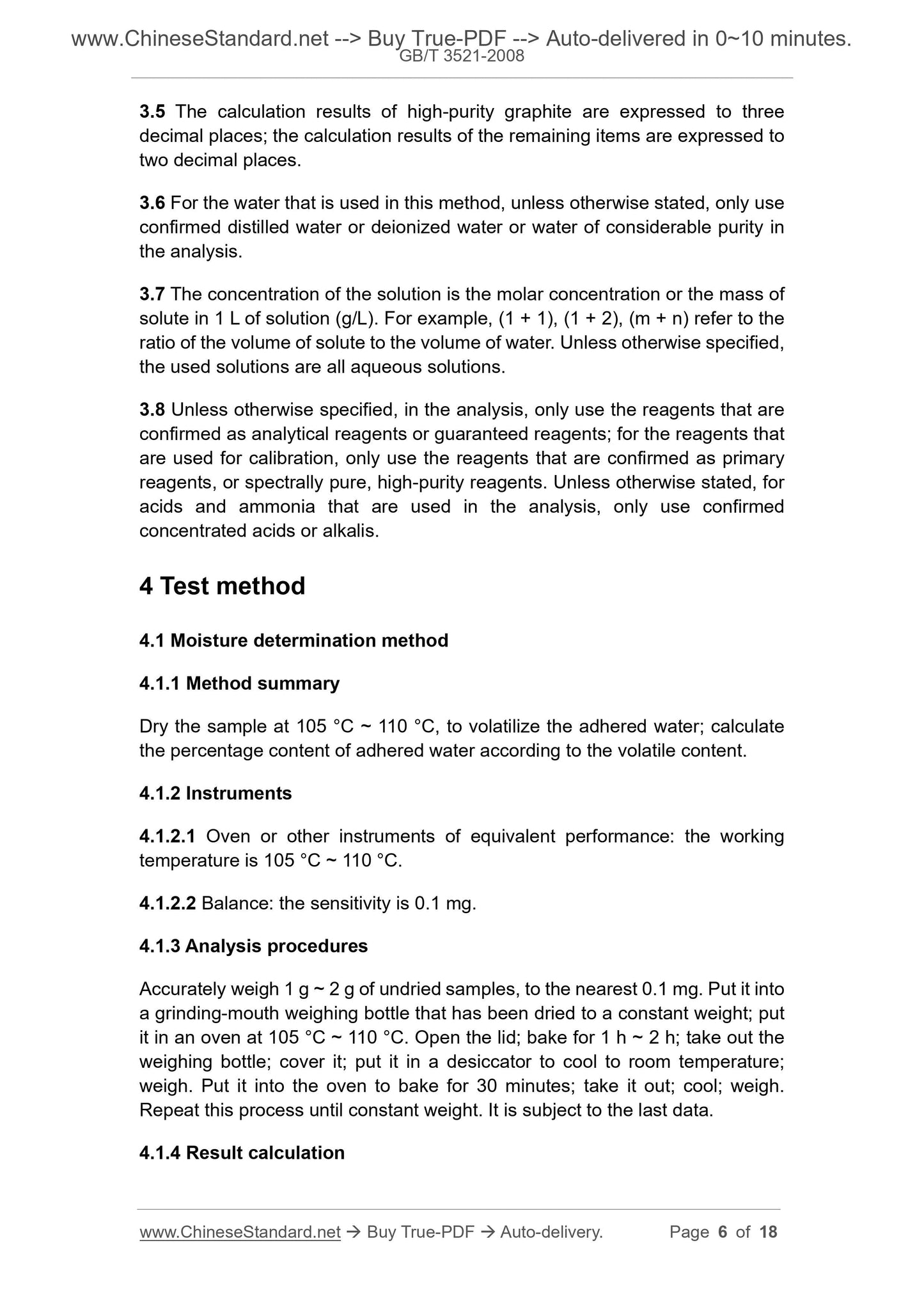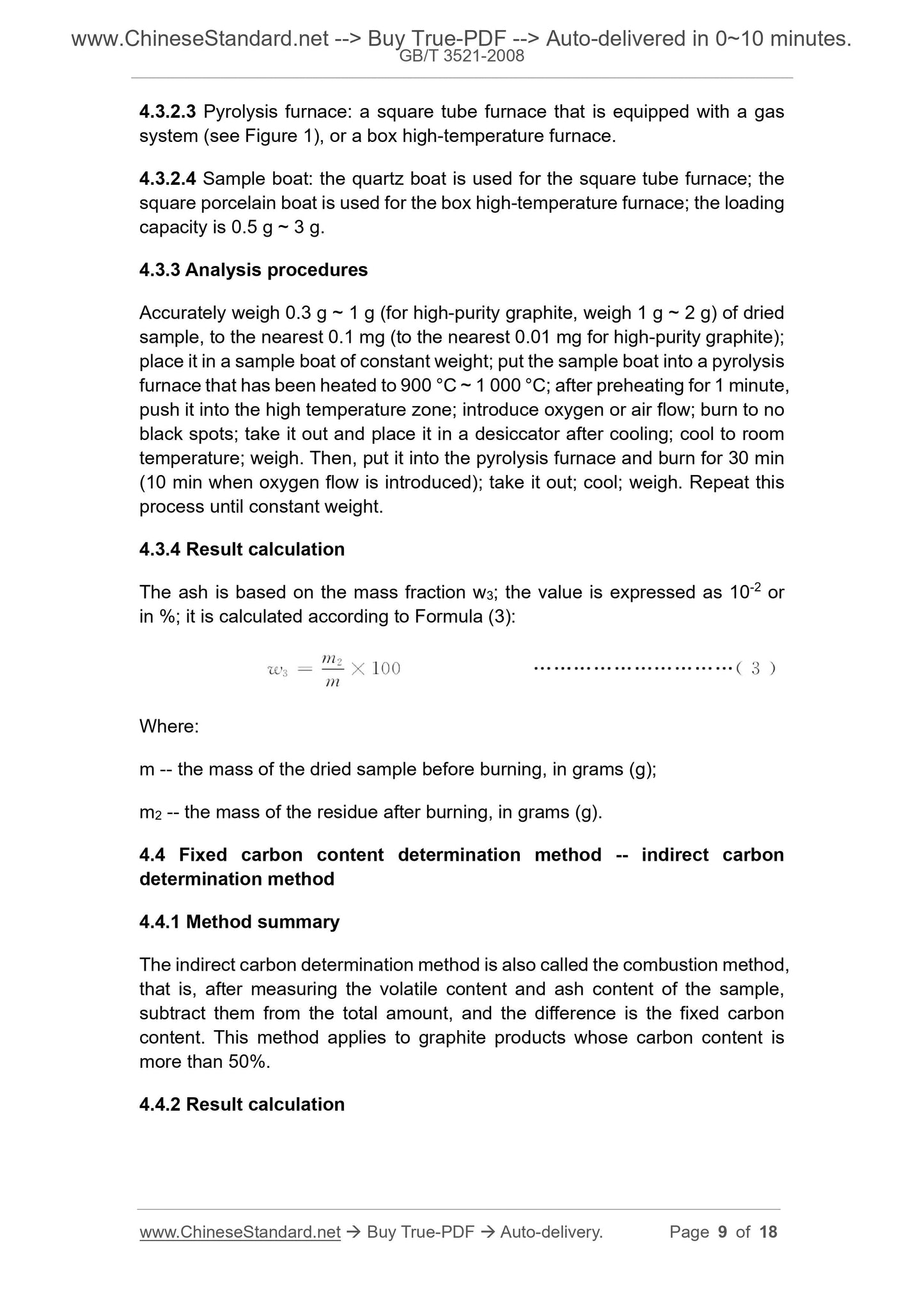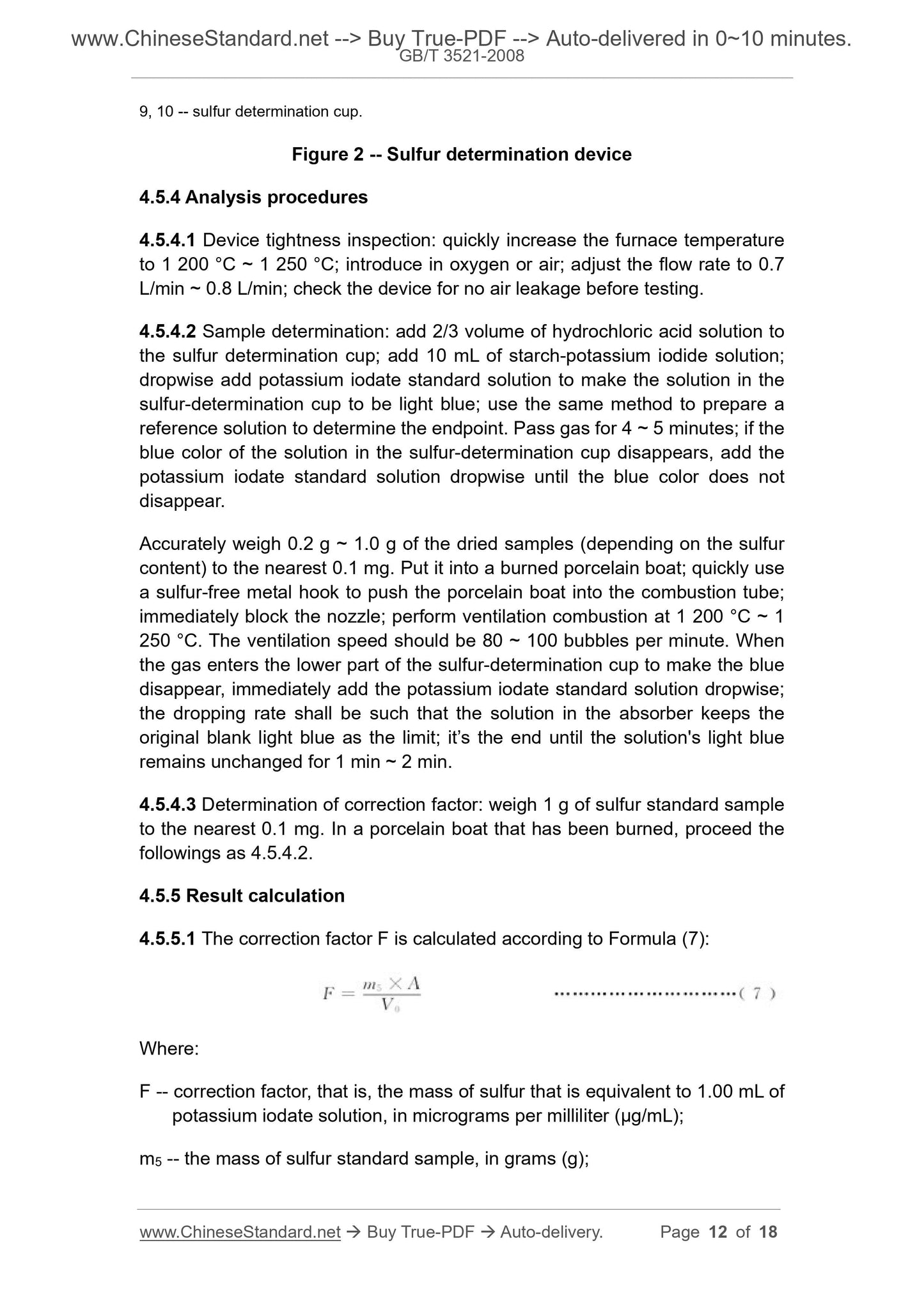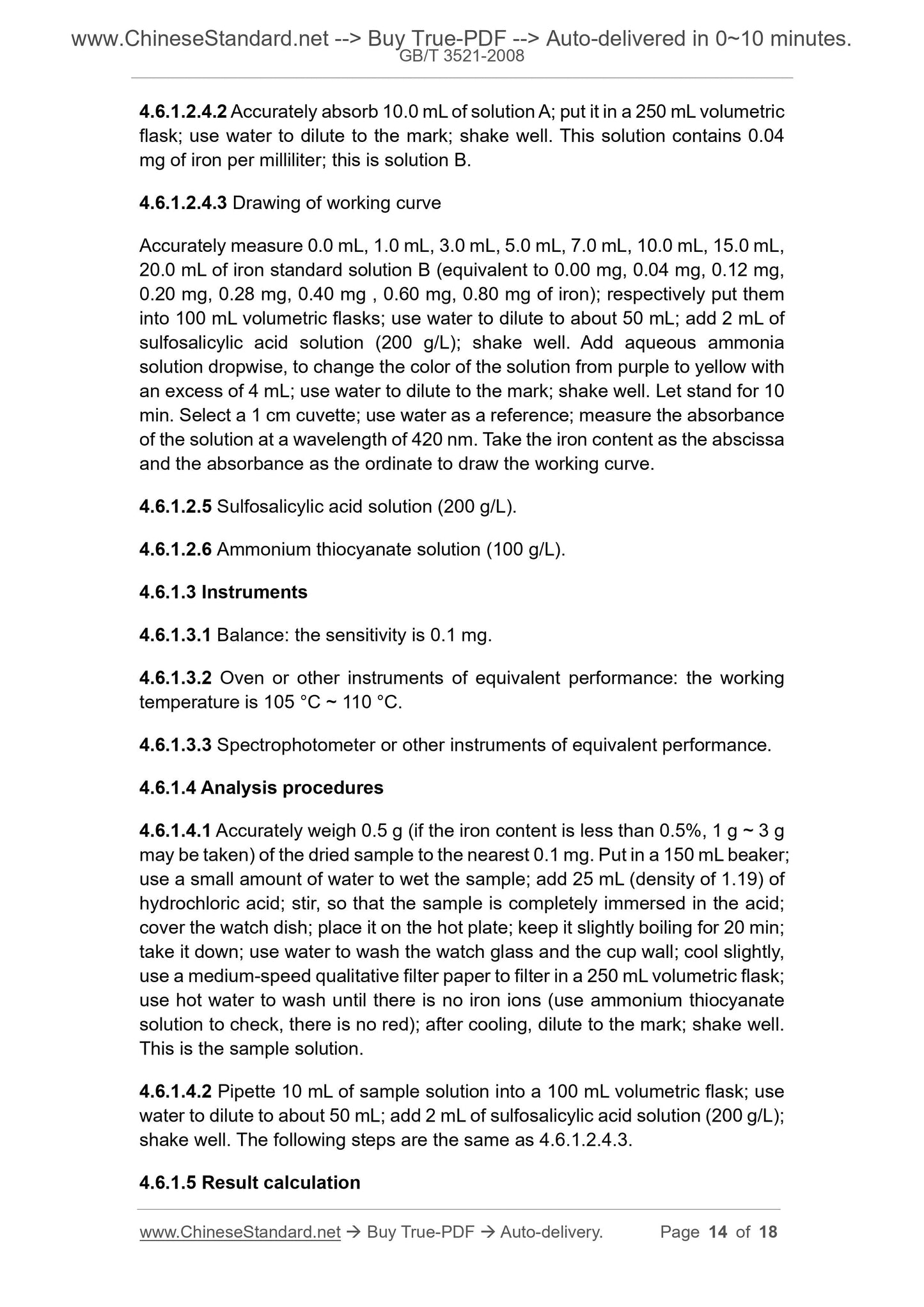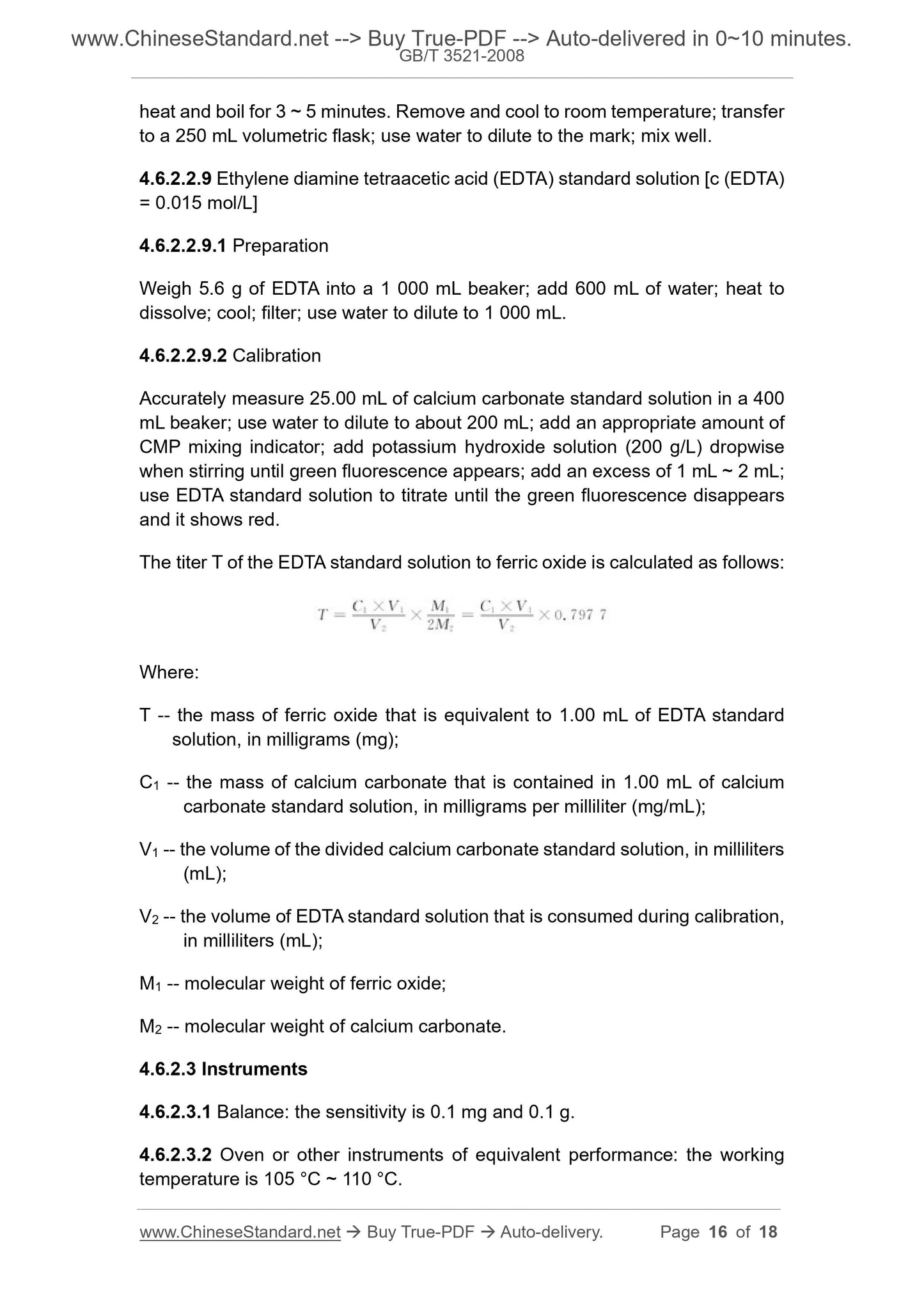1
/
of
8
PayPal, credit cards. Download editable-PDF and invoice in 1 second!
GB/T 3521-2008 English PDF (GB/T3521-2008)
GB/T 3521-2008 English PDF (GB/T3521-2008)
Regular price
$125.00
Regular price
Sale price
$125.00
Unit price
/
per
Shipping calculated at checkout.
Couldn't load pickup availability
GB/T 3521-2008: Method for chemical analysis of graphite
Delivery: 9 seconds. Download (and Email) true-PDF + Invoice.Get Quotation: Click GB/T 3521-2008 (Self-service in 1-minute)
Newer / historical versions: GB/T 3521-2008
Preview True-PDF
Scope
This Standard specifies the analysis methods of graphite products for moisture,volatile content, ash, fixed carbon content, sulfur content, and acid-soluble iron
content.
This Standard applies to natural graphite products.
Basic Data
| Standard ID | GB/T 3521-2008 (GB/T3521-2008) |
| Description (Translated English) | Method for chemical analysis of graphite |
| Sector / Industry | National Standard (Recommended) |
| Classification of Chinese Standard | Q51 |
| Classification of International Standard | 73.080 |
| Word Count Estimation | 10,148 |
| Date of Issue | 2008-08-20 |
| Date of Implementation | 2009-04-01 |
| Older Standard (superseded by this standard) | GB/T 3521-1995 |
| Quoted Standard | GB/T 3518; GB/T 3519 |
| Regulation (derived from) | National Standard Approval Announcement 2008 No.14 (Total No.127) |
| Issuing agency(ies) | General Administration of Quality Supervision, Inspection and Quarantine of the People's Republic of China, Standardization Administration of the People's Republic of China |
| Summary | This standard specifies the graphite product moisture, volatile, sulfur content and methods of analysis of acid-soluble iron content, fixed carbon content, ash. This standard applies to natural graphite products. |
Share
